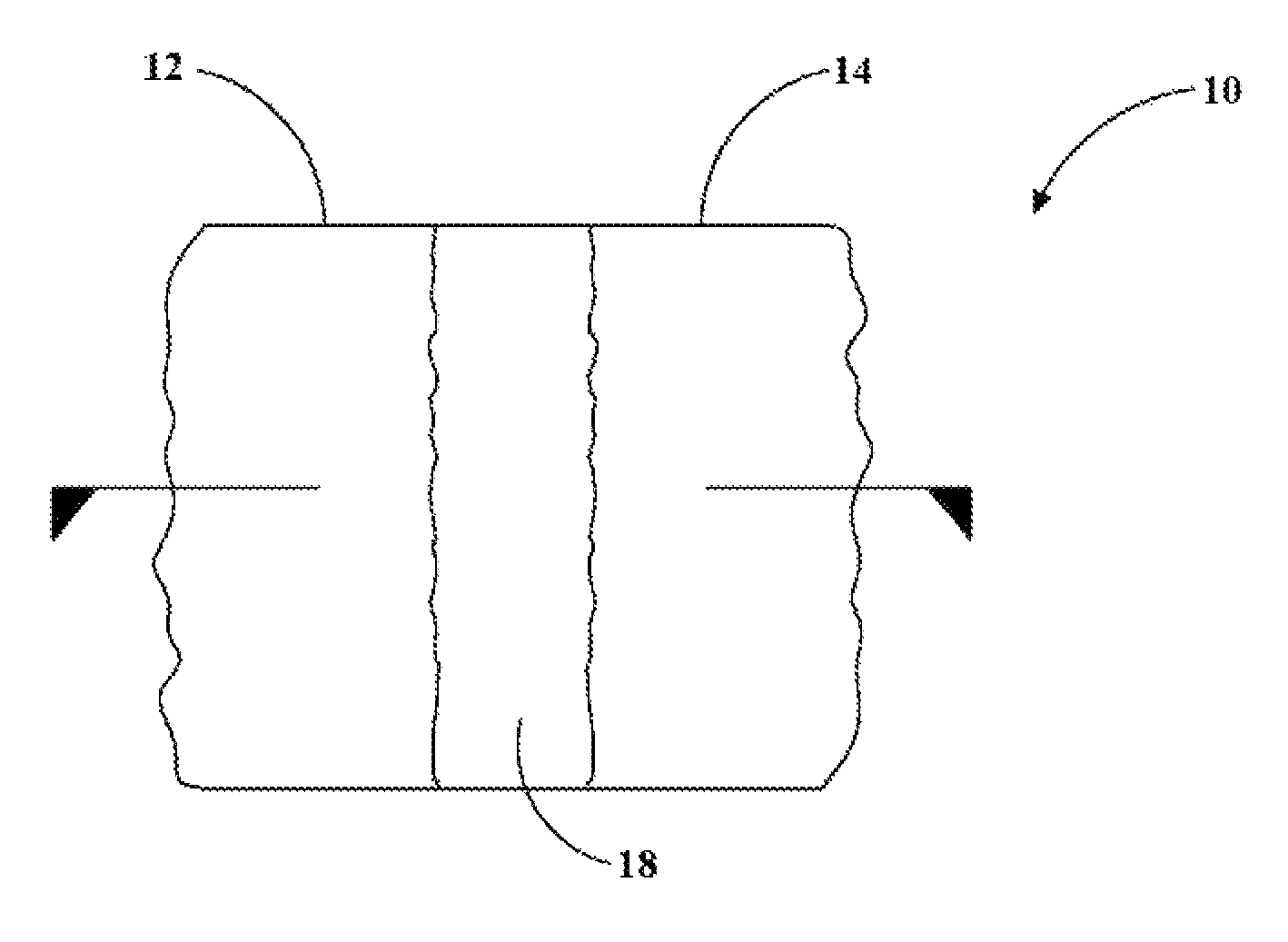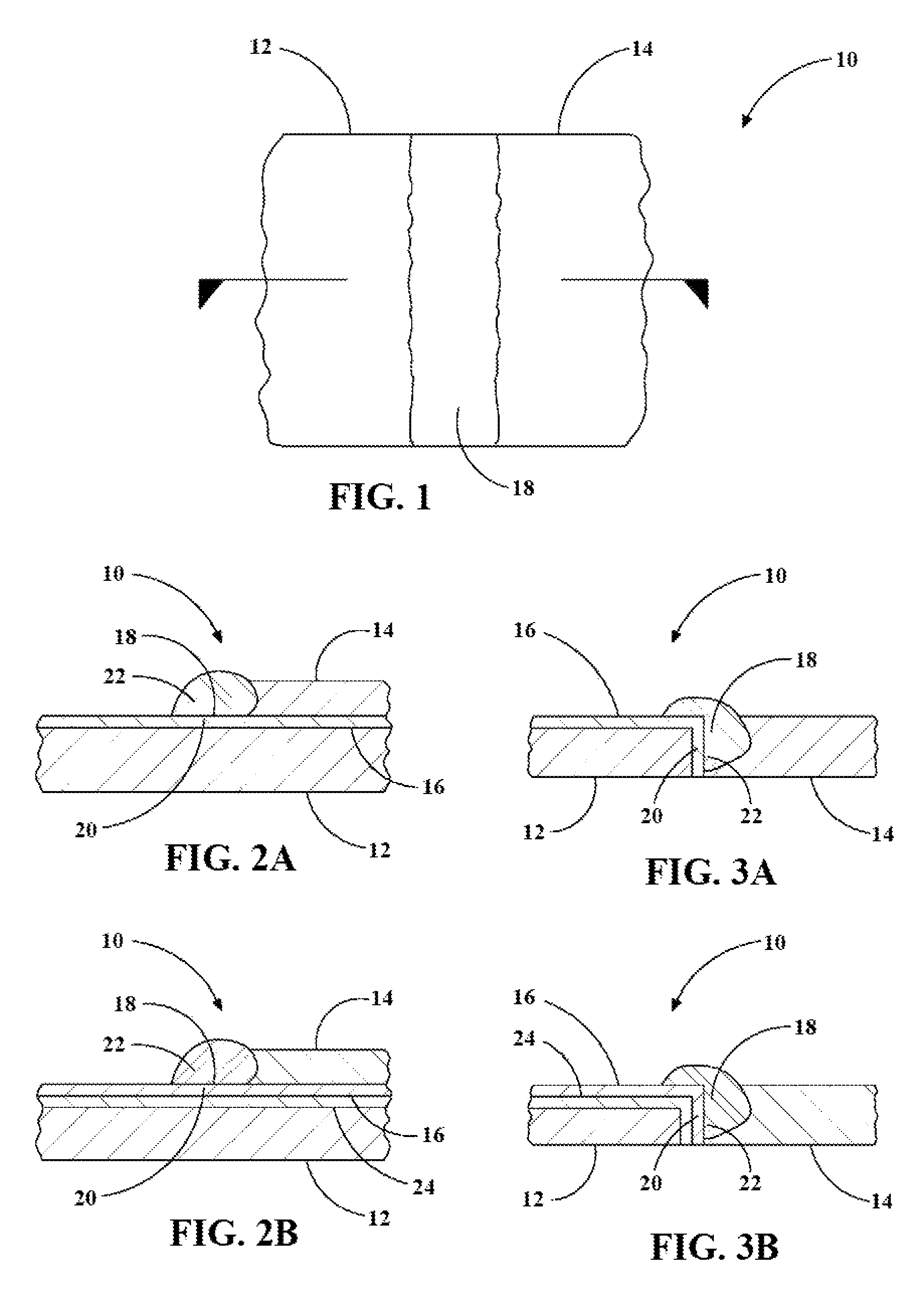Structure and method of bonding copper and aluminum
a technology of copper and aluminum, applied in the direction of solventing apparatus, manufacturing tools, transportation and packaging, etc., can solve the problems of difficult to achieve, hard and brittle intermetallics of liquid mixture of aluminum and copper, and the formation of hard and brittle intermetallics
- Summary
- Abstract
- Description
- Claims
- Application Information
AI Technical Summary
Benefits of technology
Problems solved by technology
Method used
Image
Examples
Embodiment Construction
[0018]Those having ordinary skill in the art will recognize that terms such as “above,”“below,”“upward,”“downward,” et cetera, are used descriptively of the figures, and do not represent limitations on the scope of the invention, as defined by the appended claims. Any numerical designations, such as “first” or “second” are illustrative only and are not intended to limit the scope of the invention in any way.
[0019]Referring to the drawings, wherein like reference numbers correspond to like or similar components wherever possible throughout the several figures, a bonded structure 10 is shown in FIG. 1. The bonded structure 10 includes a first metallic workpiece made of copper (hereinafter, copper workpiece 12) and a second metallic workpiece made of aluminum (hereinafter, aluminum workpiece 14). While the first metallic workpiece and the second metallic workpiece are described as a copper workpiece 12 and an aluminum workpiece 14, respectfully, it should be appreciated that they may b...
PUM
| Property | Measurement | Unit |
|---|---|---|
| melting points | aaaaa | aaaaa |
| thermal conductivities | aaaaa | aaaaa |
| melting point | aaaaa | aaaaa |
Abstract
Description
Claims
Application Information
 Login to View More
Login to View More - R&D
- Intellectual Property
- Life Sciences
- Materials
- Tech Scout
- Unparalleled Data Quality
- Higher Quality Content
- 60% Fewer Hallucinations
Browse by: Latest US Patents, China's latest patents, Technical Efficacy Thesaurus, Application Domain, Technology Topic, Popular Technical Reports.
© 2025 PatSnap. All rights reserved.Legal|Privacy policy|Modern Slavery Act Transparency Statement|Sitemap|About US| Contact US: help@patsnap.com



